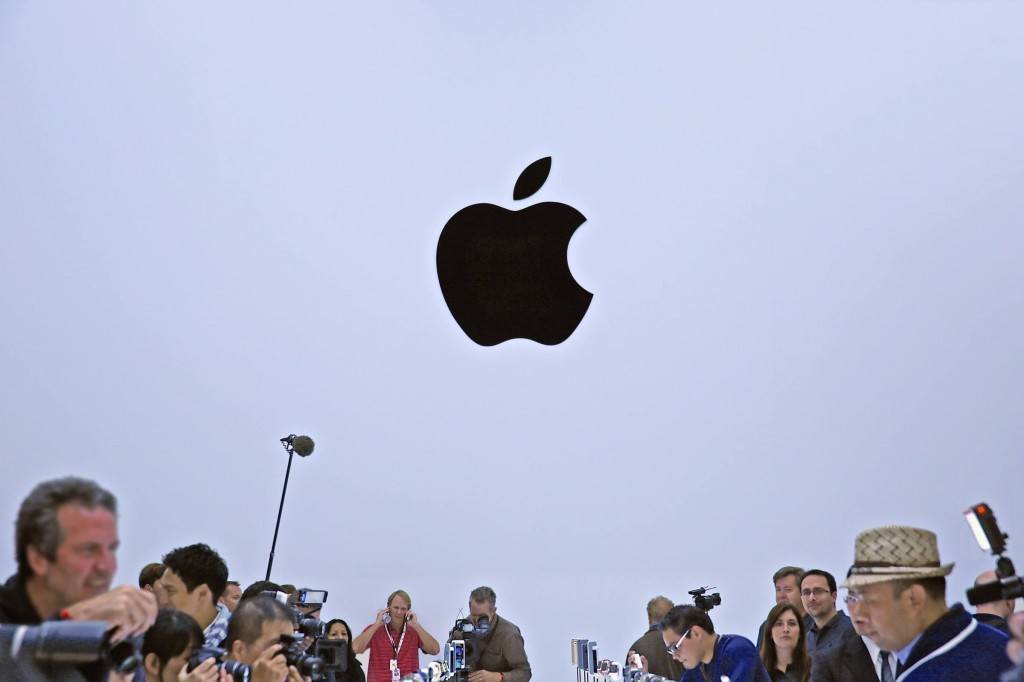Steve Jobs was a very gifted man. One of his greatest talents was making people believe things that, objectively speaking, were not exactly true. This was commonly referred to as the “reality distortion field” around him, quoting a Star Trek episode were Spock and Captain Kirk land on Talos IV, which is inhabited by people who are capable of creating realistic illusions by means of telepathy.
Three years after the death of its charismatic founder, Apple is doing all it can to maintain this reality distortion field, mainly by exercising total control about anything that is reported about the company or its products. In contrast to Apple’s design philosophy this strategy does not manifest itself through clarity and elegance, but through a subtle and sometimes questionable toying with our, the reporting journalists’ vanities and dependencies. If you write positively you’ll be wined and dined, if you criticize, no matter how fairly, you’ll be penalized. Admittedly this is common practice with large corporations, but hardly any one of them will go as far as Apple does. And there is no other corporation that the media have allowed to get away with this kind of manipulation for such a long period of time.
Shadows from the Past
While Tim Cook has successfully stepped out of the shadow of his ingenious – and choleric – father figure, the press and marketing departments at Apple are still under the spell of fear and control mania instilled by the founder. It all dates back to the days when Apple was on the verge of bankruptcy and any form of indiscretion could have had grave consequences, both for the perpetrator and for the company. Nobody would have thought at the time, or later after the dot.com bust, that Apple would not only be able to turn itself around, but that it would even become one of the most profitable corporations in the world. The media had written the company off; many didn’t even bother to attend Apple press conferences any more.
If you know me and my blog you will be aware that I cannot be counted among the Apple bashers in Germany. Lining up in order to blog about the launch of the iPad in the US earned me the nickname “Fanboy”, and that label is not entirely unjustified. I do believe that Steve Jobs and Apple have enriched us all through the user-friendliness and elegant design of their products.
But in the meantime I have also seen the other side of the company. This side is consciously not spoken about in the media, and that is remarkable in and of itself. For this article I compared notes with countless colleagues, and all of them were anxious to remain anonymous, so that they would not fall from grace at Apple. Fall from grace for reporting the truth about a company. In a journalist that’s a worrying reflex. So there are good reasons for taking a closer look at how reports on iPhones, iPads and Macs have come about in the (German) media.
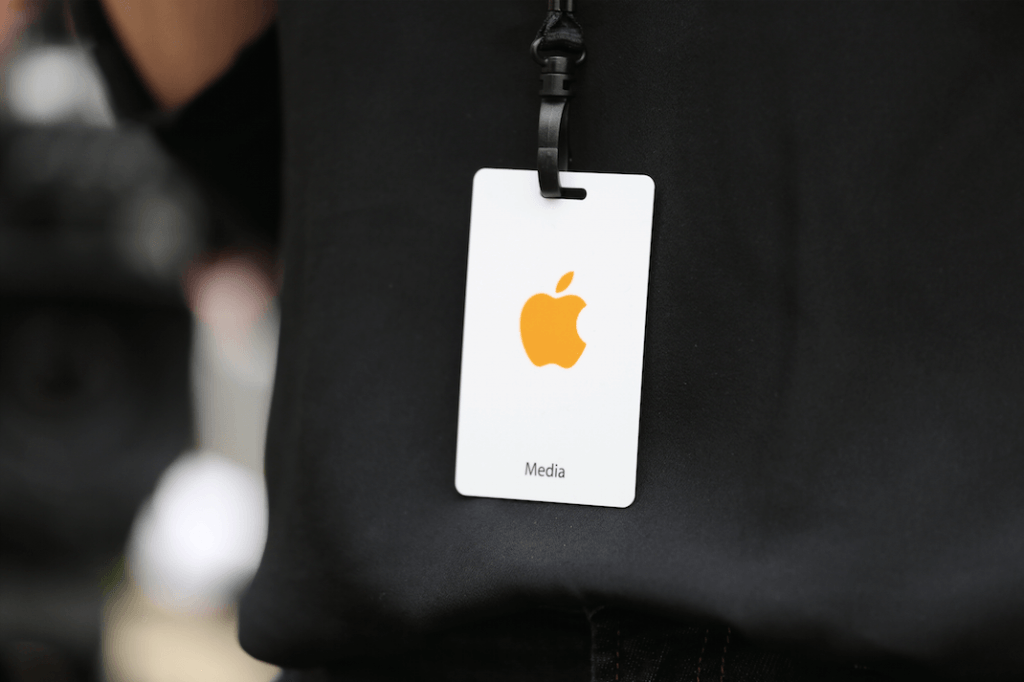
The Select Few
There is a consistent pattern to Apple product launches: In a number of steps it is ascertained that whatever gets reported about Apple products is in keeping with what the company from Cupertino wants. That starts with the selection of the right journalists.
You can’t just sign up for an Apple event. You will be selected. Usually invitations are not sent to a magazine or to a station, they go to each journalist in person. Even if there are no directions from Cupertino, as is alleged, you have to assume that this selection is done very carefully with a person’s principal attitude to Apple in mind. You are expected to appreciate the invitation.
For many journalists such an invitation to an Apple event is like a stamp of approval. Men in particular like to decorate their desks with their accreditations. They dangle from our cubicle walls signalizing to our colleagues: Look where I have been (and you have not). The bigger and more exclusive the collection, the higher up you are in the internal pecking order. Accreditation cards as journalistic pissing contest.
Apple knows about the significance of these invitations and uses them to put pressure on addressees. “Computer Bild” (one of the most-read German tech magazines) received an angry phone call from Apple’s PR agency as soon as it had put up a video on its website that was critical of the iPhone. They would “never again” get a complimentary device for testing purposes, nor would they be invited to Apple events in the future (quoted by Editor-in-Chief Axel Telzerow). The company itself did not want to comment on this incident.
It is unusual for Apple to throw a tantrum like this, and in most cases it is not necessary. The manipulation starts earlier, in the editorial team, or even through the department head or the chief editor. They will make sure that no young whippersnapper will ruin the good relationship to Apple with his or her honesty. If you write too critically, you’ll risk excommunication. No more access to Apple paradise.
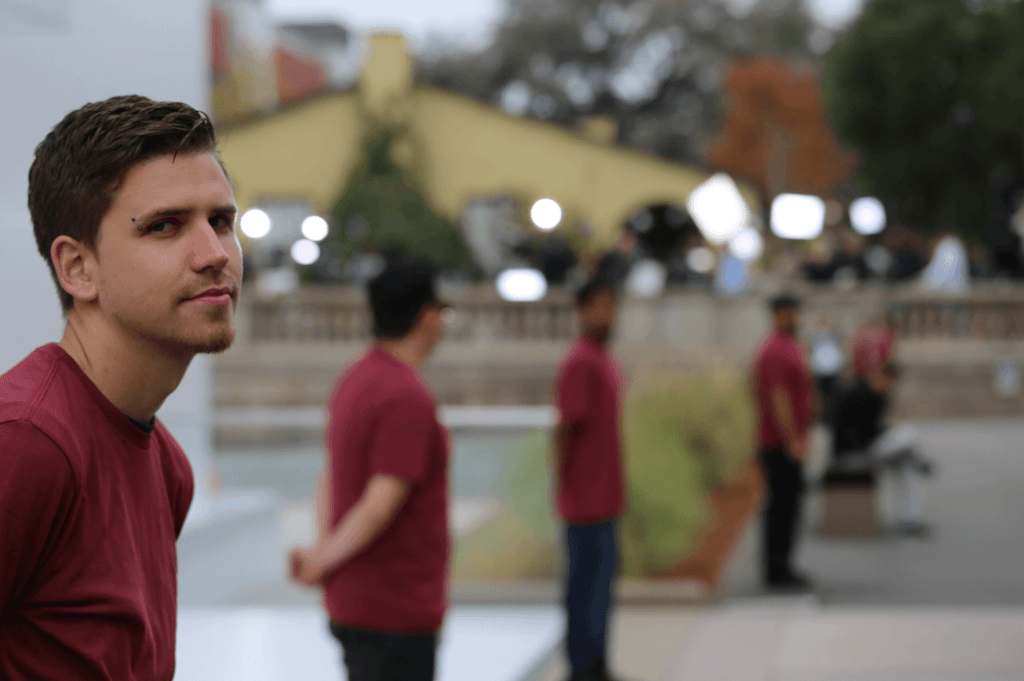
Trip to California
Recently I was lucky enough to receive one of the coveted invitations. Not to London, mind you, where product presentations for the European media are usually held. This time I was invited to come to Cupertino. Two days in California, all inclusive. Of course I was free to pay for my own ticket, I was told when I explicitly asked. But wouldn’t it look funny, if I were to travel all by myself back in Economy, while my colleagues were living it up in Business? There were times when Apple treated media representatives to Economy only – even for long-haul flights. That was changed a few years ago – allegedly because some journalists clamored for it.
We were taken to the venue in a bus – not unlike being driven to a sales show. There were color-coded badges for everyone: Employees, guests and VIPs were shooed-in directly to the Big Hall. For the rest of us, about 400 journalists from all over the world, they have prepared a large open-air space behind the building. The path is lined with students in ruby red Apple t-shirts. We follow the instructions of our minders. No need to be particularly persuasive here, there is a long coffee buffet with fruit, cookies and smoothies. Upbeat music is blaring from loudspeakers. The mood reminds me of the funfair scene in Pinocchio, just before everybody turns into an ass.
As I look around the compound and try to make contact with guests from other areas, two Apple employees politely ask me to stick to my own crowd of reporters in the open enclosure reserved for us: “There is coffee and snacks waiting for you guys!”
Chummy and friendly, but firm – this is their way of putting journalists in their place. I encountered it for the first time at the launch of the first iPad in New York. I was on the other side of the enclosure at the time, and I had a first-hand impression of how Apple was making professional reporters dance in the circus with rings through their noses. Photographers who are chased away, because they are only allowed to shoot the waiting lines from a distance. PR people watching carefully that reporters don’t get to hear anything that is not in tune with the orchestration. Like, some of those alleged Apple fans are really homeless people who hope to sell their place in line for a few dollars later.
It is remarkable what you can observe if you are working “under cover” and if you don’t tell Apple you are a journalist. I was almost chased away from my place in line when the Apple people became suspicious of the professional mike I was using when interviewing the people next to me. “Who are you reporting for?” a PR lady wants to know and tells me to up and leave. Reporters had no business to be among the waiting crowd. “I write a blog”, I tell her and I show her my website. “OK, that’s cool,” the lady in the Apple shirt says and leaves me alone.
Colleagues who have been to a few Apple events don’t even try to start any discussions with the organizers any more. They know where the limits are and they have made their peace with this kind of nannying. The crowd at the presentation of the iPhone 6 and of the Apple Smartwatch is no exception. Any reporter who has made it this far will be aware: There are more boring places to be this afternoon.
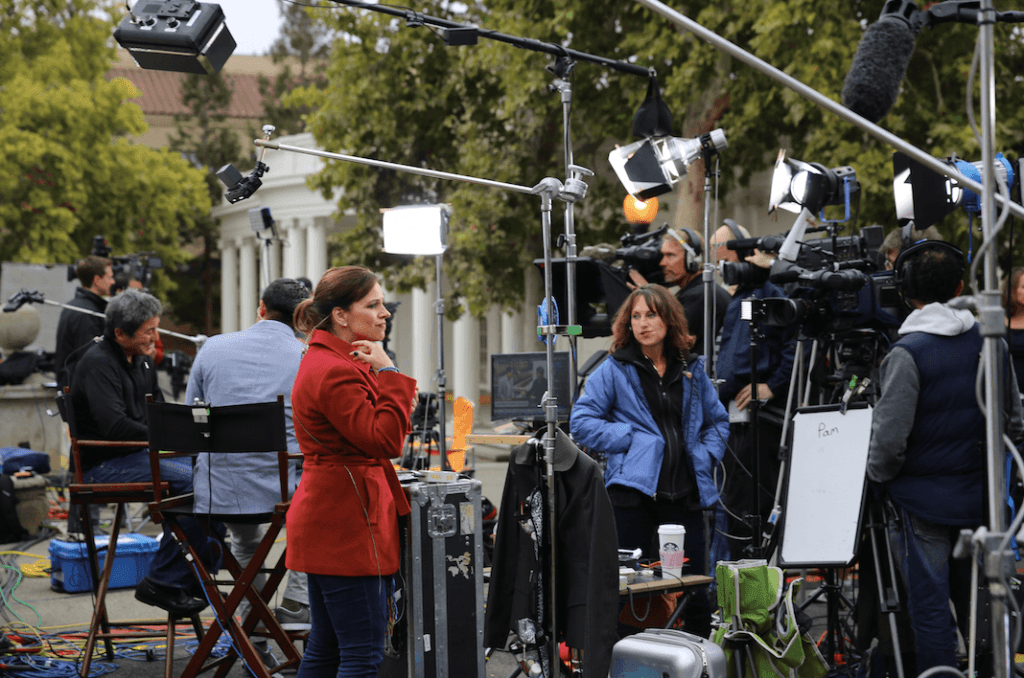
The Orchestration
Just before the keynote starts I notice to my surprise that there are quite a few empty rows in the auditorium. A hectic voice calls on us, the journalists, to move to the front, but few of us move. All of a sudden the empty seats are filled by Apple employees who were quickly summoned to the rescue. The glamor of the Oscars in Cupertino! A few minutes before the program is finished the placeholders sneak out of the hall like a well-disciplined army. They’re obviously needed elsewhere in a few minutes.
The show itself unwinds according to script. Well, almost. While Tim Cook is celebrating the new iPhone on stage, people’s screens around the world remain black, because there are problems with the video stream. Finally it comes live, but only with a Far-Eastern voiceover. “Not our finest hour,ˮ one employee says later. That is all he wants to say about the mishap.
It’s not that Apple is embarrassed by mishaps, no, they are just swept under the rug. Remember 2010, when Steve Jobs tried to upload the homepage of the New York Times with his new iPhone 4 – it didn’t work because the local WiFi had broken down. The situation caused a long and painful pause in the hall, but later in the official Apple video of the event it lasted just a few seconds, and there were no error messages on the screen and no laughter and no hooting from the audience. Reality was distorted.
Even though keynotes are planned down to the smallest detail and will be rehearsed at headquarters days in advance, there was another goof-up at the Developers’ Conference earlier this year. During the presentation of an App developer the toy cars steered via the iPhone did not behave according to plan. There was an embarrassing silence in the hall, accompanied by the usual sneers on Twitter and on live blogs. Even though the error could be corrected quickly by a reboot, Apple had the sequence eliminated from the official video of the event – as if the mishap never had happened.
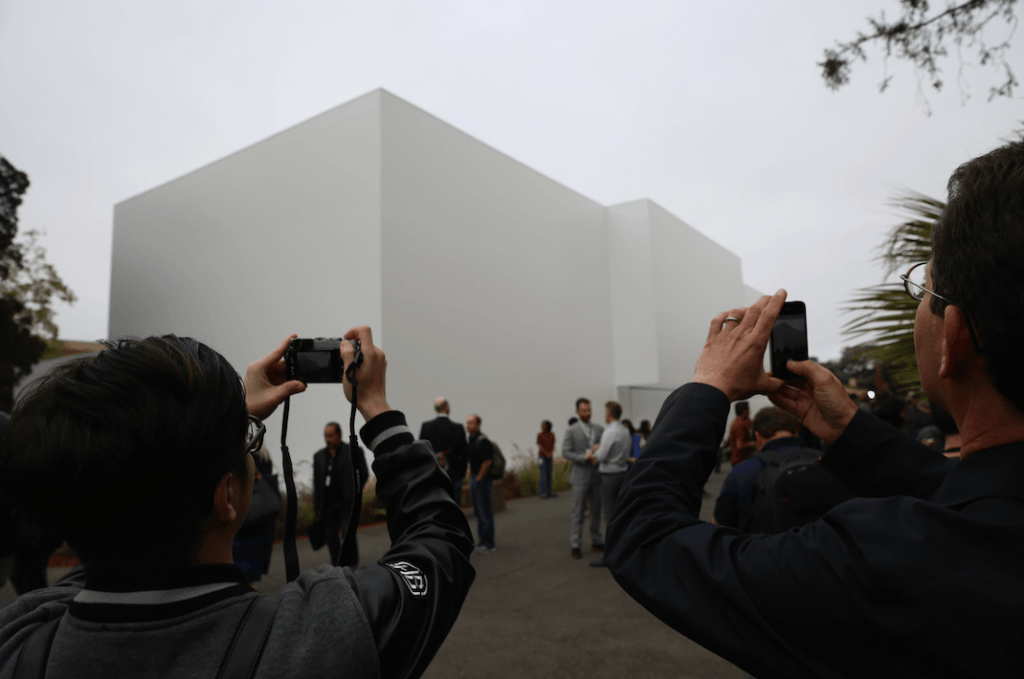
Hands On
After the sales show journalists and VIPs are allowed to touch the new products. They put up a Hands-On-Area for this which looks like a cathedral. An enormous cubistic building with a hall inside painted in shining white. Not a speck of dust, no stray object to be seen inside. Nothing to take attention away from the products. There are two aisles to both sides of the hall where the new iPhones and the prototypes of the watches are displayed on altars. Above our heads, right were the crucifix would be in a church, a black Apple logo is looming.
And as you would expect in the Church of the Apple there are Commandments here that journalists have to obey. One of them is: “Thou shalt have no other gods before me”. When I put a Samsung phone next to the iPhone 6 on the presentation counter in order to be able to compare the two devices I am warned by a hostess: “Actually, we don’t want that!ˮ The young woman asks me to take away the product from the competition. Alright, I think, and I put my old iPhone next to the device, a first-generation iPhone. Again I am politely told that this is not wanted. “But … that’s an Apple product!ˮ I say. Didn’t Tim Cook himself talk about the fantastic evolution of the iPhone? “Yes, but we want you to focus on the new product!ˮ The PR lady is getting less friendly by the minute.
I’m starting to get angry. I get the iPhone 6 dummy from my pocket that had been passed around like contraband at the IFA conference in Berlin a few days before the official Apple premiere. I ostentatiously place the China clone next to the original device and I start making photos. My minder has grasped the situation in an instant; her face now indicates DEFCON 3. She urgently waves at a man who has been watching the counters discretely from the background. She whispers in his ear. Before he can say anything I have packed my things and have disappeared in the crowd.
Enter Tim Cook. What happens next is difficult to express in words. What is happening is exactly: nothing. You have to imagine: A room packed with journalists, and not one of them will even attempt to approach Cook in order to interview him or get a statement from the Apple CEO. I have observed this phenomenon before, back in the days of Steve Jobs. And I was baffled back then that nobody spoke to him, myself included. When Jobs walked past me I was paralyzed, and I am usually not known for my reserve.
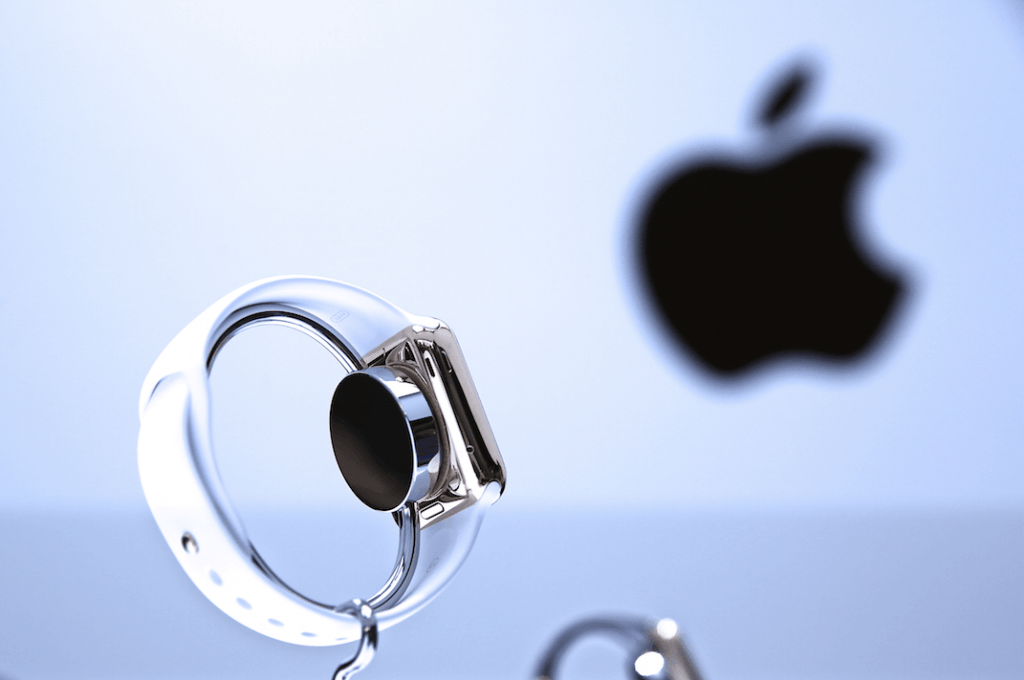
The Media Briefings
Just before sales officially started, the devices were introduced country by country. Media representatives were invited who had not been allowed to participate in the trip or who had received a complimentary device in advance. Apple representatives from European headquarters in London are usually present at these media briefings. Journalists get a 30-minute slot, during which the device is explained to them under the watchful eye of the European Head of PR, Alan Hely. Photos are not allowed during these briefings, nor are questions about the company – only about the product.
After the conversation each journalist is handed a white bag containing an iTunes voucher, an iPhone jacket and a device in the reporters “favorite color”. These items are referred to as “permanent loans”. This year they even gave us two models for testing – the iPhone 6 and the iPhone 6 Plus (sales value between 699.00 and 999.00 US$). We were kindly requested to send one of them back soon.
It does say something about the company that a multi-billion enterprise such as Apple has made do without a media relations officer for long periods of time. The position of German press officer has been vacant for two years now, even though Germany is one of the most important markets after the US and China. Allegedly Tobias Fröhlich, Deputy Speaker of Axel-Springer-AG, is supposed to start in the job soon. But in the US they don’t seem to be in a hurry to find a suitable corporate press officer either. Until a successor is found for Katie Cotton, who left earlier this year, Steve Dowling will fill the role. He is Deputy Head of PR at Apple.
And what about us, the journalists? How long do we want to continue to be manipulated by the Apple strategists? Spoon-fed information only, nannying, even threats – that’s a high price to pay for a complimentary device and hopefully the next invitation from Cupertino. It used to be that Apple’s products were popular not least because of its clever PR (“Think Different”). Today it has to be said that Apple’s products are popular in spite of its PR. Maybe it’s time for all of us to take a closer look at our own role in this game. I for one will be happy to follow Apple presentations on my screen at home in the future. It makes it easier for me to look in the mirror every day, and it helps defuse the realitiy distortion field.
This story has been originally posted on Krautreporter, a crowdfunded digital national news magazine in Germany.
